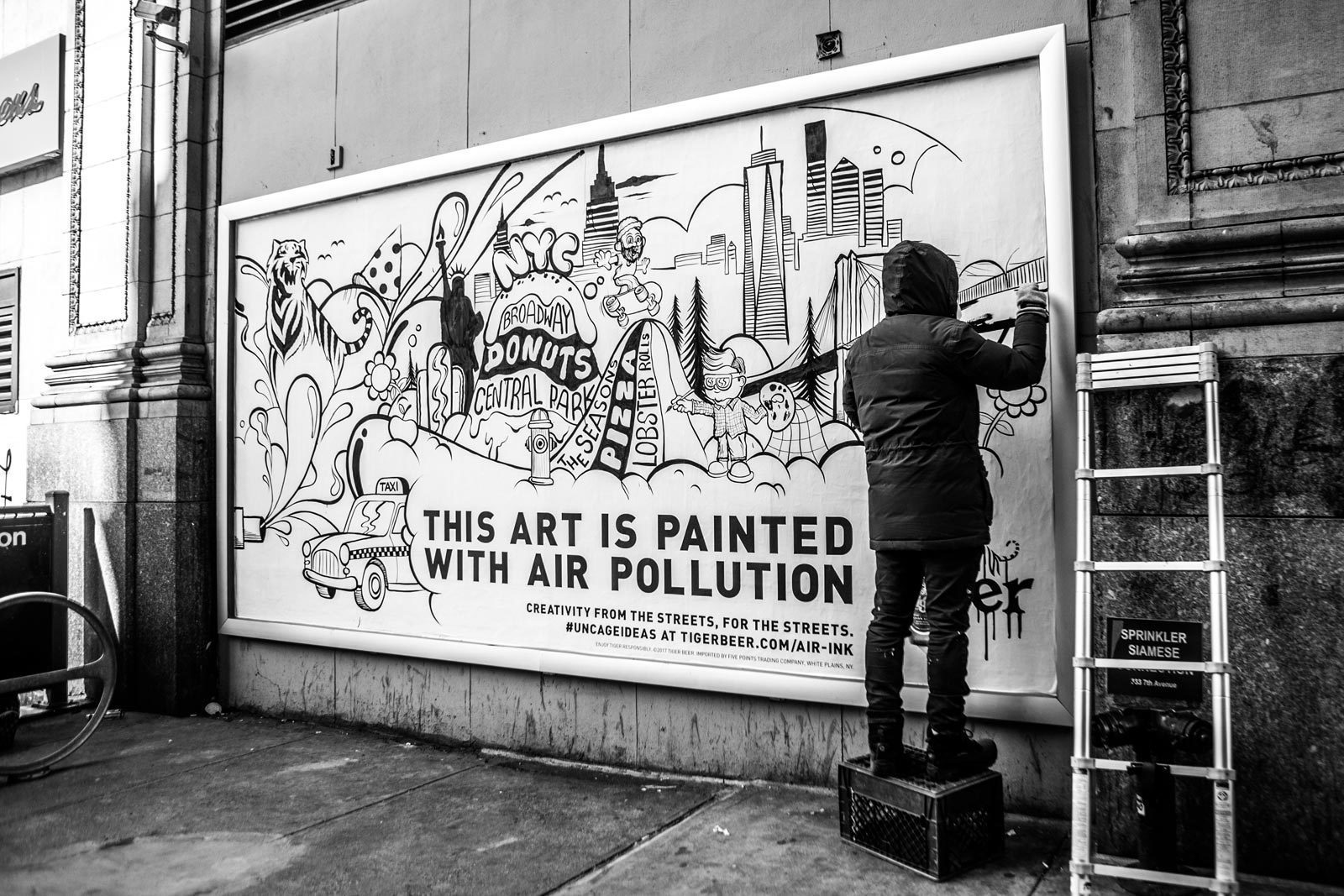Turning Air Pollution into Art

In 2012, on a visit home to Mumbai, India, MIT Media Lab student Anirudh Sharma, SM ’14, saw something that resembled dirt accumulating on his T-shirts. It turned out this grime was soot from fossil-fuel emissions.
Produced by incomplete combustion of fossil fuels, soot is made up of tiny black particles of carbon. Inhaling it can cause major health issues: in India, studies have linked this and other forms of air pollution to as many as 1.4 million premature deaths over the past few years.
Sharma sought a creative way to address this problem. His startup, Graviky Labs, has developed a system to collect soot spewing from exhaust pipes and convert it to ink or paint for artists. “Less pollution, more art. That’s what we’re going for,” he says.
Graviky’s system starts with a cylindrical device that attaches to the exhaust systems of vehicles or diesel generators. Inside is a disposable cartridge filled with high-energy plasma. Applied voltages trigger the plasma to attract soot flying by, ridding the air of roughly 85 to 95 percent of the particles. Full cartridges are sent to Graviky Labs, where the soot is treated to remove heavy metals and toxins.
In India, Graviky sells the soot collection device to companies and organizations to use on diesel generators that help power buildings. So far, the devices have captured 1.6 billion micrograms of particulate matter, which equates to cleaning roughly 1.6 trillion liters of outdoor air. More than 200 gallons of the final product, called Air-Ink, have been harvested for a growing community of more than 1,000 artists from Bangalore, Boston, Hong Kong, London, and beyond. “Art helps us raise awareness about where the ink and paint comes from,” Sharma says.
A Kickstarter campaign last summer sold out on Air-Ink markers and items decorated with the ink, including T-shirts, postcards, motorcycle helmets, and shoes. According to Graviky, each ounce of Air-Ink—about enough to make one marker—offsets 45 minutes of air pollution generated by a vehicle.
Last March, Tiger Beer partnered with Graviky to design a large advertising campaign about air pollution. Graviky gave 150 liters of Air-Ink to artists in heavily polluted Hong Kong to create murals. In April, an Air-Ink mural was featured for several weeks in Piccadilly Circus in London, and the city’s Museum of Writing has a permanent exhibit on the medium.
As the community of Air-Ink artists grows, Sharma hopes the startup’s message gets heard worldwide. “Air pollution knows no borders,” he says. “It’s in India, Boston, and places all over the world. Our ink sends a message that pollution is one of the resources in our world that’s the hardest to capture and use. But it can be done.”
Keep Reading
Most Popular
Large language models can do jaw-dropping things. But nobody knows exactly why.
And that's a problem. Figuring it out is one of the biggest scientific puzzles of our time and a crucial step towards controlling more powerful future models.
How scientists traced a mysterious covid case back to six toilets
When wastewater surveillance turns into a hunt for a single infected individual, the ethics get tricky.
The problem with plug-in hybrids? Their drivers.
Plug-in hybrids are often sold as a transition to EVs, but new data from Europe shows we’re still underestimating the emissions they produce.
Stay connected
Get the latest updates from
MIT Technology Review
Discover special offers, top stories, upcoming events, and more.